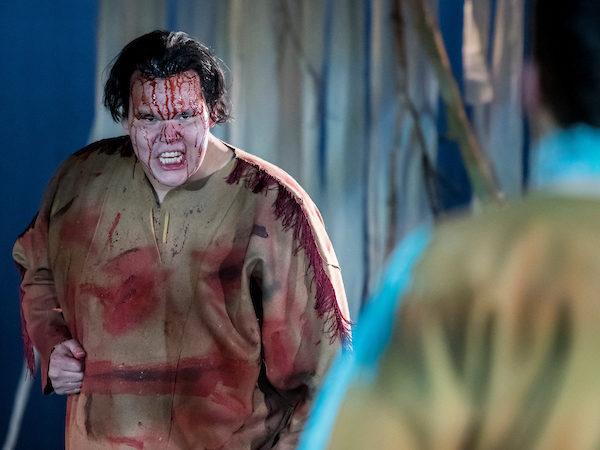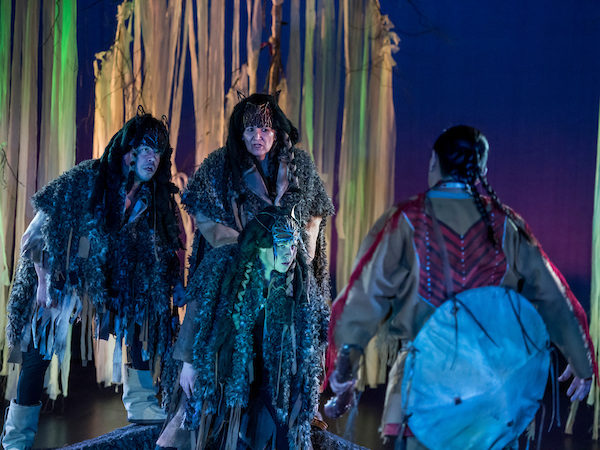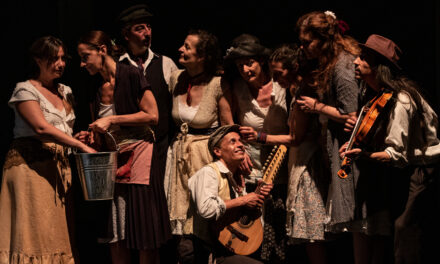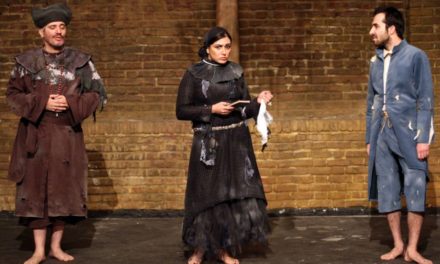Edmonton, Alberta. Connor Meeker reviews Pawâkan Macbeth: A Cree Tragedy, a co-production between Akpik Theatre and Theatre Prospero of Reneltta Arluk’s adaptation of the Shakespearean tragedy:
Adapting one of the Bard’s swiftest and punchiest plays, Theatre Prospero and Akpik Theatre’s Pawâkan Macbeth: A Cree Tragedy reimagines the Scottish Lord in Western Canada. Playwright Reneltta Arluk’s adaptation—or “takeover,” as she prefers to call it—skillfully interlaces a canonical Shakespearean tragedy with Indigenous myth and worldview, creating a poignant and darkly humorous production.
Arluk sets the action in Plains Cree territory in the 1870s, before the signing of Treaty 6—a tumultuous time of conflict between First Nations warring with each other and the Canadian Government. Macikosisân (Macbeth), a great Okihcitâw warrior, plots with Kâwanihot Iskwew (Lady Macbeth) to kill the Chief, Okimâw Wîpâstim (Duncan). Pawâkan Macbeth hews close to the plot of its source material while making several generative changes in adapting the story to a Cree context. The supernatural elements of Shakespeare’s play are situated within Cree cosmology: Macikosisân’s vaulting ambition is stoked by the presence of the Wihtiko, a cannibal spirit of Cree legend. The three witches (played by Mari Chartier, Nathan Loltz, and Sophie Merasty) who prophesize Macikosisân’s fate are wryly humorous trickster figures and are given a more prominent role within the narrative. Arluk’s incarnation of Lady Macbeth is seven months pregnant, adding fascinating layers of complexity to the character’s traditional absence of maternal instinct. The language shifts fluidly from English to Cree and from colloquial to Shakespearean, allowing the production to bridge the gap between Cree and Shakespearean cultural contexts.
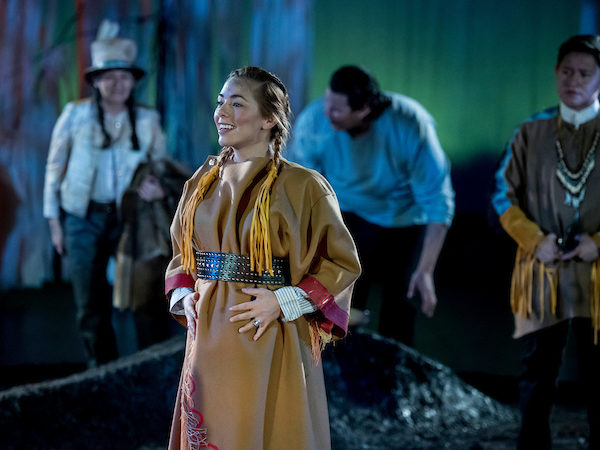
© Marc J Chalifoux Photography 2017
The show’s eleven actors give powerful performances. As Macikosisân, Curtis Peeteetuce undergoes a terrifying transformation from a respected warrior to a tyrant consumed by cannibalistic urges. Allyson Pratt’s Kâwanihot Iskwew (Lady Macbeth) deftly balances the countless nuances of her character’s conflicting desires, producing a raw and affecting performance of a woman who is capable of both inciting brutal violence and nurturing her own baby. As part of the expansive design, Leif Ingebrigtsen’s pulsing sound and Kerem Çetinel’s inventive lighting work effortlessly work together to intensify the action on stage.
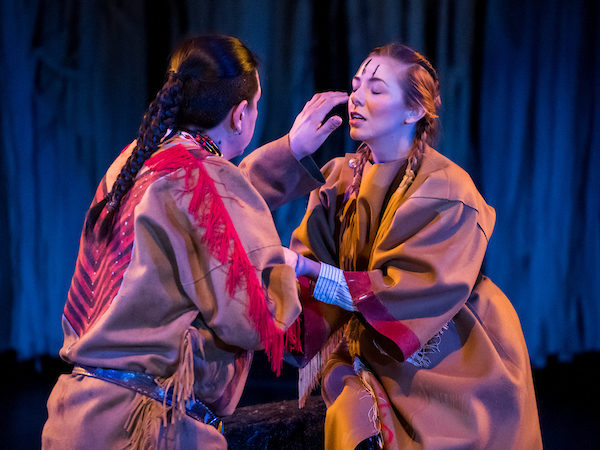
© Marc J Chalifoux Photography 2017
The production is a collaboration between Yellowknife’s Akpik Theatre, an Indigenous-led company, and Edmonton’s Theatre Prospero. With a company of eleven Indigenous actors and seven designers, it’s on a scale not often seen in Indigenous theatre in Alberta. The scale of the show is made even more impressive by the fact that it’s designed to be portable enough to adapt to non-theatrical spaces—after this initial public run, the show will be toured to Indigenous communities throughout Treaty 6 territory.
Pawâkan Macbeth evokes multiple resonances between Canada’s pre-Treaty history and our current socio-political situation, calling for harmony and reconciliation moving forward. After Macikosisân is slain, Kihcîkosisân (Malcolm) makes a speech to the warring groups. He warns them that the Wihtiko is bound to reappear in another form, predicting that their spirituality will be suppressed and their women subdued. As the house lights partially rise, he calls for unity in facing these impending challenges. As Arluk states in her Playwright’s Note, “Now, in the time of reconciliation, we need to make good on the unity our ancestors agreed to. It is time to step out of comfort zones. To go beyond the blackbox of theatre. To listen.” Pawâkan Macbeth shows us that the time to come together, to collaborate, and–most importantly–to listen is now.
This post originally appeared on Alt Theatre on December 14, 2017, and has been republished with permission.
This post was written by the author in their personal capacity.The opinions expressed in this article are the author’s own and do not reflect the view of The Theatre Times, their staff or collaborators.
This post was written by Connor Meeker.
The views expressed here belong to the author and do not necessarily reflect our views and opinions.

